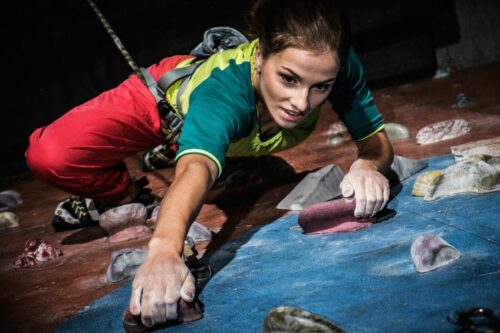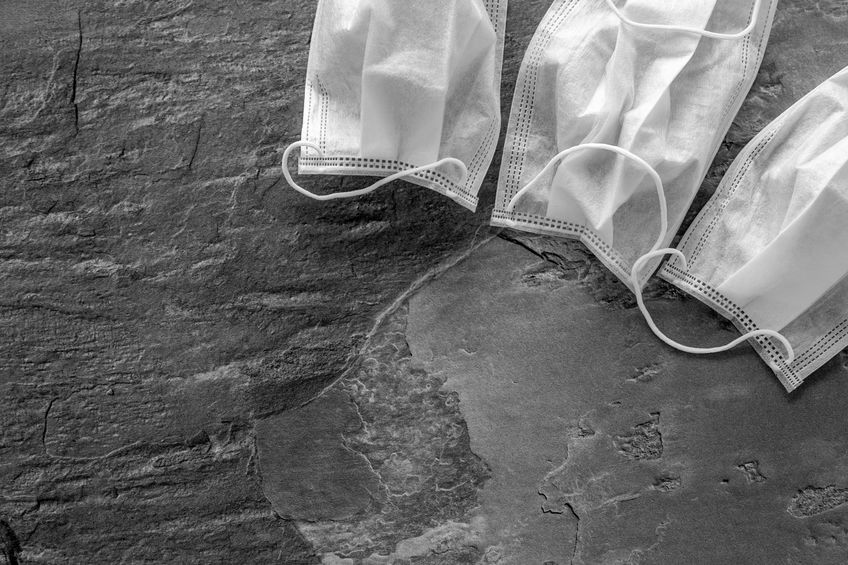By Jackie Pettitt –
Rock climbing is scaling new heights, literally and figuratively. Approximately 6 million Americans now climb outdoors or at one of the more than 500 indoor rock climbing gyms nationally. Next year the sport will get another boost when men and women will compete for medals at the 2020 Olympics.
So why the popularity? Lots of reasons. Thanks to the rise in rock climbing gyms it is easier than ever to participate indoors or outside. It is also great exercise (think burning 600-800 calories an hour). Climbing also builds stamina, physical strength and mental toughness. Want a bonus? It is a social sport that lets you connect to people and have fun.
Rocking climbing, however, is a serious business that takes time and effort to master. Thankfully, there are lots of ways to practice and reach your goals whether you’re an advanced climber or a beginner. There are also many forms of climbing, which differ depending on whether you’re working indoors or scaling surfaces outside.
Thanks to the continuing growth in rock climbing gyms, it is easier than ever to get started in the sport or hone your rock climbing skills without going outside. The climbing options practiced indoors include bouldering, top roping and sport climbing. Beginners or advanced climbers can use these indoor facilities to build safety knowledge, stamina, power and technical skills that they can apply to outdoor climbing.
If you’re looking for an option that demands power and gymnastic skills but uses on shorter walls without ropes then bouldering may be for you. It is also great for the solo adventurer as all you need is a crash pad to enjoy it indoors or outside. Bouldering is particularly useful for gaining finger strength and power that you might need on harder sequences and routes involving roping or lead climbing.
If the powerlifting of climbing doesn’t seem right, rope climbing might be a good fit for you. It is the long-distance running of climbing. Here you’ll practice the most efficient way to get up a wall while learning a lot about the technical skills of climbing in the process. But unlike bouldering, you will need a climbing partner to ensure your safety.
Rope climbing is broken into two disciplines indoors—top roping and lead climbing. Top roping requires having a rope already set up at the top of the wall. Your partner or belayer will take in the slack as you climb. It is the discipline you’ll most likely start with when you join the world of climbing. Top roping ultimately helps you build a foundation of “rope management,” as well as the technique and endurance needed for more arduous climbing options.
The next challenge most climbers tackle is sport climbing. While both top rope and sport climbing require that you are attached to a rope for safety, sport climbing differs because the rope starts at the bottom of the wall. The climber then clips quickdraws as they climb to protect their fall. Mastering these options helps develop the skills necessary to start climbing outdoors or to take on the greater challenge of trad climbing.
Trad climbing demands many physical and mental skills. Not only do you lead climb the cliff, but you’re required to place gear known as nuts and cams into the climbing surface. You then clip your rope into this gear for protection as you climb. Obviously, you better hope your gear is secure because if it doesn’t hold you’re in for some serious whippers (big falls).
Big falls admittedly come with the territory of climbing outdoors. But there are lots of ways to mitigate the dangers of rock climbing before launching into the great outdoors. One of the biggest is to remember that it is the outdoors. Before going you must check the weather; make sure you’re wearing proper clothing and hiking shoes; know what kind of critters reside in the area you are going to; and bring appropriate supplies for the day. The next requirement is to know what you’re doing before you try to tackle outdoor climbs. Learn how to build or clean anchors and place your gear. Get in touch with a guide and take the necessary courses to master the climbing discipline you’ve chosen. Once you’ve covered all this, think about testing yourself on some nearby options before tackling the most difficult climb. Check out www.mountainproject.com for climbing locations and additional information.
And, of course, you can always visit a nearby climbing gym to brush up on your skills. Climbing, after all, is a great way to get strong and stay strong physically and mentally.

About Jackie Pettitt
Jackie has been training and competing since she was 12, starting out as an equestrian, training with Olympic rider Kathy Connolly. She started rock climbing in 2008, combining the skills from her riding career with what she had learned from these professional climbers to become the rock climbing coach she is today with The Stone Summit Climbing Team. She also started successful programs like the Adult Team and Granite Girls, which created a stronger climbing community in Boston.
To learn more, visit www.ssclimbingteam.com











